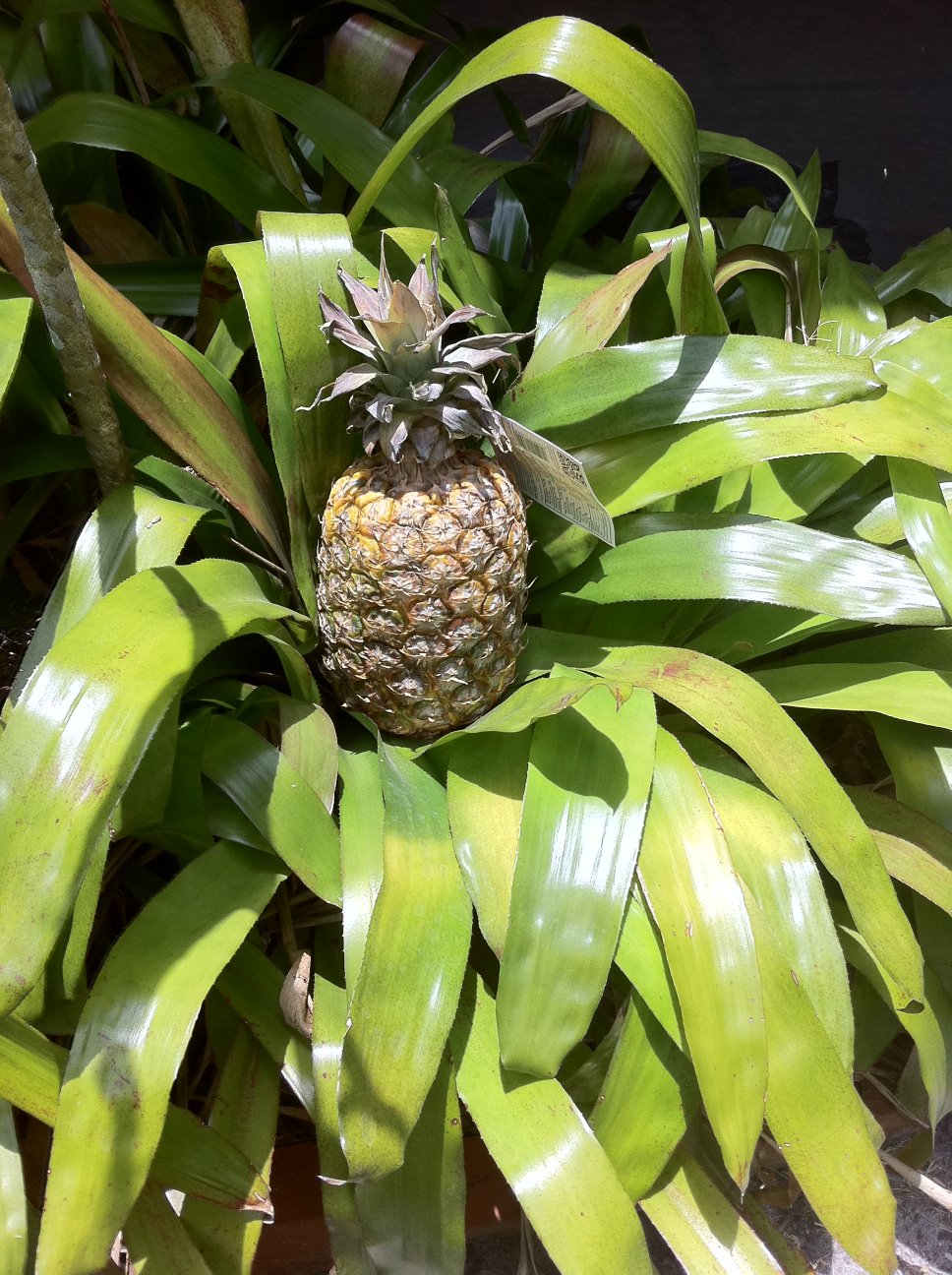Fibonacci Cuts
Remember my recent Cycad blog? Someone asked me an innocent question: is this related to the pineapple? I'm glad that was asked... because I did not know the answer so I had to do some homework for myself. In another seemingly unrelated vein, take a look at today's photo. My backyard got a... pineapple! Of course, that is just a joke on you, because this plant is not a cycad, nor that this pineapple sprouted out of it. This pineapple came from Publix supermarket. I bought it, thinking first that it looks and smells fantastic; and second that I would know what to do with it. Not even close! I have no idea how to cut this guy open, and it looks so forbidden, I am pretty sure I need help from someone more capable. A friend gave me a piece of advice: You'll need a sharp knife... a very sharp knife. But that is not my problem! My problem is how does one proceed. Then it dawned upon me that I had dealt with something similar before. Look here! Fibonacci!
This is the link that gives some sort of answer to the question above: Yes and No. Pineapple is not related to cycad, but both share the same passion: they love Fibonacci. What's that, you ask? Let's first talk about cycad. They reproduce by making seed cones that look pretty much like pineapples. These cones have spiral patterns. In some slender cones, one may notice 3 spirals veering to the left and 5 spirals moving oppositely, or vice versa. In larger ones, 5 and 8 spirals can be noticed, and some still larger cones may display 8 and 13 spirals: each set moving opposite to the other. Giant cones may have as many as 21 spirals. These numbers (3, 5, 8, 13 & 21) form part of a numerical sequence known as Fibonacci numbers which came from the work of a 13th century Italian mathematician, Leonardo da Pisa. The sequence begins with these terms: 1, 1,2,3,5,8, 13,21,34,.. and so on. Except the first two numbers, any term in the sequence is obtained by adding the two preceding numbers. The sequence is thus non-ending. We call it an infinite series.
Pineapple scales are also Fibonacci-patterned into spirals and because they are roughly hexagonal in shape, three distinct sets of spirals may be observed. One set of 5 parallel spirals ascends at a shallow angle to the right, a second set of 8 parallel spirals ascends more steeply to the left and possibly a third set of 13 parallel spirals ascends very steeply to the right. To have 13 spirals, you would have to get a very large pineapple. Mine has either 5 or 8. So I need to know if I should cut this following the 5 or the 8 spirals. See? Not so trivial! I probably will make a plant out of this baby instead of trying to perform surgery on it with a ceramic knife with which I am sure I will cut my fingers to pieces.



No comments:
Post a Comment